Master the roulette wheel numbers and table layout with this comprehensive guide by Peter Nairn, our casino insider.
Roulette, a game steeped in history and excitement, has long captivated players at casinos worldwide.
This classic game of chance offers an enticing combination of simplicity, anticipation, and the thrill of winning.
In this guide, Peter delves into the intricacies of roulette wheel numbers, shedding light on the mathematics, layout, and strategies surrounding this staple casino game.
Here’s what you’ll discover:
Let’s dive right into the world of roulette numbers!
Author’s note: How this guide will improve your roulette gameplay
While it's true that there are no guaranteed ways to win playing Roulette, you can play smart and choose the best ways to play.
By following the suggestions in this guide, you will know that you are making the best plays to minimize your losses and give you the best opportunity to win.
Bond, James Bond! We've all seen the suave British secret agent in the casino, a man in charge of his environment, and usually at a Baccarat table.
But he plays Roulette, too.
There is the glamour of the roulette wheel layout, the sound of the ball as it drops into the numbers on a roulette wheel, the clack of the chips as the dealers pay out the winning bets in hundreds of chips.
It's magnetic and so mesmerizing . . .
Before going there, we need to talk about the different versions of Roulette available to play.
There are essentially three types of Roulette:
- French Roulette;
- European Roulette;
- American Roulette.
To make the best decisions about which game to play, we need to look closer at the three versions:
- French and European Roulette uses the same single-zero wheel.
- The House Advantage on a single zero wheel is 2.7%.
- The American version uses a double-zero wheel.
The double zero wheel has a House Advantage of 5.26%, which makes it one of the worst games to play in the casino.
(And we won't even talk about the 'Triple Zero wheel. At 7.69%, it's a horrible game to play!)
The French and European wheel are identical; they only have a single zero, but a rule in the French game makes it a better option than the European game.
French Roulette 'En Prison' or 'La Partage'
With the En Prison, on the even money bets – red and black, odd and even, and high and low, when the zero hits, you only lose half of your even money bet.
This reduces the House Advantage on those bets on the game from 2.7% down to 1.35% - making it one of the best casino games.

At first glance, the numbers' layout on the European and American wheels appears quite random.
In fact, the opposite is true.
The wheels have been carefully curated to randomize them as much as possible.
The Red and Black numbers alternate consistently around the wheel, and there is never a spot where two or more reds or blacks are next to each other.
The Even and Odd numbers are well distributed around the wheel. There are never more than two even or odd numbers next to each other.
- Even numbers 1 – 10 and 19 – 28 are black and odd numbers are red.
- Even numbers 11 – 18 and 29 – 36 are red and odd numbers black.

Unless you spend a lot of time learning where all the numbers are, it can be quite confusing to try and see a consistent pattern of how the numbers are laid out.
Both wheels try to alternate the Low (1 -18) and High (19 – 36) numbers are much as possible, and generally, they're pretty successful. The European wheel only has 5 and 10 adjacent to each other, but the American wheel isn't quite so consistent.
Expert Tip #1
There are several different strategies to keep in mind when betting based on how the numbers on the wheel are laid out.
As you know, 'dealer signature' may be one of the ways to adjust your betting to take advantage of possible inconsistencies in the game's randomness.
If you do so, it may be possible to predict where the ball is going to drop from the track into the numbers by keeping track of the numbers as they hit and by working out that the dealer is consistently moving the ball around the wheel in a way that can be predicted.
For example, it may be that the ball drops 1/4 of the wheel from the last number hit. If you find such a pattern, exploit it by calculating where the next spin will fall and then bet on that section of the wheel.
The European wheel is set up in sections, and by using the 'announced' bets, you can select the section of the wheel where the ball is perhaps most likely to land.
There are a couple of additional areas to be aware of.
On an American wheel, you will notice a section of approximately 1/4 of the wheel where there are 6 red numbers in the 2nd Dozen.
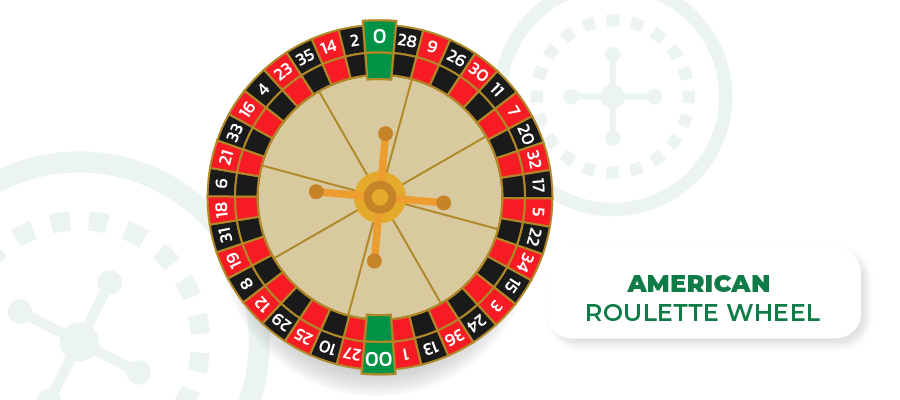
There is also the mirror image of that bet on the other side of the American wheel. Starting at the double zero and going to the left, there are the 6 black numbers from the 2nd Dozen.
So a bet on the 2nd Dozen and the relevant color may be good bets if you see the dealer signature pointing toward either of those sections.
Expert Tip #2
On the European wheel below, if you split the wheel in half, going down from zero, you will notice that on the right side of the wheel, all the low black numbers and all the high red numbers are there.
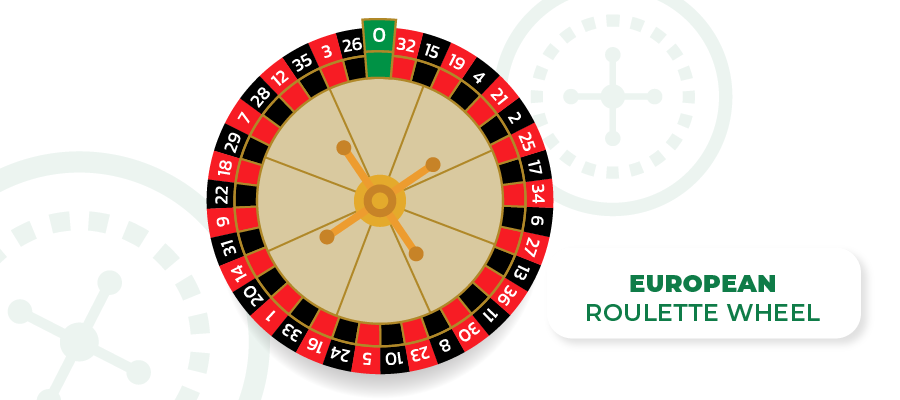
Conversely, on the left side of the wheel, all the high black numbers and the low red numbers are there.
And a section of 9 numbers does not include any numbers from the 2nd Dozen.
It is almost 1/4 of the wheel.
The numbers are 32, 0, 26, 3, 35, 12, 28, 7, and 29.
Again, if you see a dealer signature pointing towards these sections, you may be able to identify a bet on the Outside numbers that may allow you to take advantage of the sections the dealer may present to you.
The short answer is no; the numbers on the roulette wheel are curated to make the wheel as balanced as can be while attempting to make the outcomes as random as possible.
The numbers on the European and American wheels are in a completely different order, but there is a structure to them.
What is clear is that on both wheels, the numbers and colors are consistent across both – for example, 10 is always black, and 23 is always red, and so on.
It would be very confusing if they were inconsistent on the different wheels.
How randomness affects gameplay
The idea behind the numbers on the wheel is that the layout is somewhat chaotic.
It was originally designed to be that way so that the results could never be consistent and seen to conform to a pattern.
The way the game works for the casino is if the results are truly random.
By making it that way, the casino would preserve its House Advantage and ensure it won at the end of the day.
Many players have tried to see patterns and create order in the game. Over the centuries, I'm sure that a few have perhaps succeeded, but it is a very, very few. And, of course, as soon as a player found a weakness, the casino immediately found a way to remove or counteract it.
The role of the casino in ensuring fairness
Years ago, one of my mentors told me that if people didn't win, we wouldn't have any players, which is self-evident. Players won't play if they have no chance of winning.
The casino's role is to ensure we have plenty of winners!
To do that, the games should hold what they're supposed to – which means that we shouldn't win too much, or our players won't return.
As Vice President of Casino Operations, part of my job was deciding which games to put on our casino floor. I would never put a game with a high hold percentage on our floor.
Never.
In Roulette, the ball must drop and randomly hit the numbers. If not, the game isn't fair, and the players may not win as much as they should.
Casinos are in the business of making their players happy.
To do that, they must make sure that enough players win so they will keep playing.
It's no good if the casino beats everyone every day.
To ensure we have lots of players, the games must:
- Be fun to play
- Have a reasonable hold percentage – not more than 5.5% at the most, and even that is a little on the high side.
- The dealers must deal with the games accurately, ideally with no mistakes. From the casino's point of view, making a mistake that penalizes the players is just as bad as a mistake that penalizes the casino.
Ever wondered what's inside a roulette wheel?
Here's an illustration of the construction of an old-school manual roulette wheel:
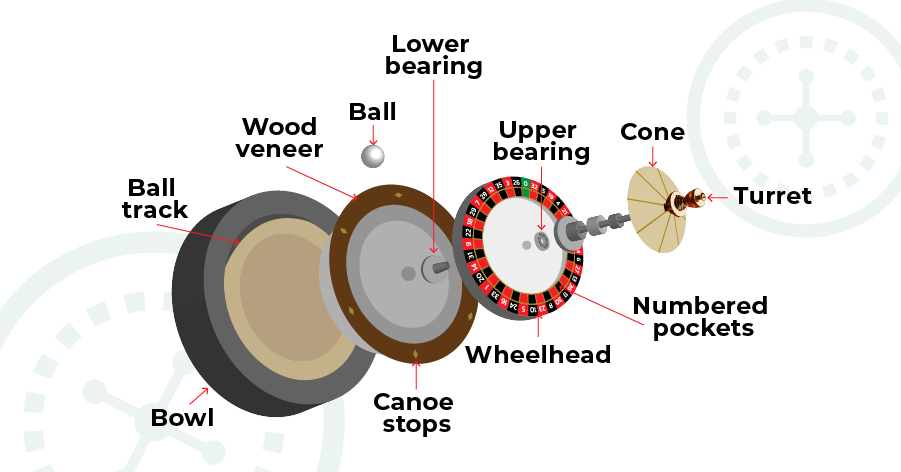
Some modern wheels include software that allows the wheel to read the winning number, keep track of numbers that have hit, automatically update the scoreboard, and so on.
Some include software that allows the wheel to automatically and randomly adjust its speed after the ball is released to ensure a completely unpredictable spin.
The Cammegh company refers to this as 'Random Rotor Speed' or RRS.
Cammegh wheels are regarded as being among the most technically sound and highest-quality wheels made anywhere in the world.
Major companies like Cammegh and Huxley offer complete customization of the woods and metals that affect the wheel's aesthetics. The operational parts generally aren't customizable.
Roulette Balls
Here are three roulette balls from the Playboy Club in London. They come packaged in a small box, six at a time.
The ball on the top right is twice as heavy as the other two.
Roulette balls used to be made of ivory, but they are now made of synthetics.
Each table has two balls of different sizes and weights in use.
These are 18mm balls, the other ball (not shown) is the larger version, at 21mm. It's usually the dealer's preference over which ball to use, but some supervisors prefer to override it.
Hardwood Veneers
Roulette wheels are made with the finest materials. Exotic hardwoods such as mahogany, ebony, and burled walnut blend durability and beauty.
The Ball Track
A groove where the dealer spins the ball, usually made of a particularly hard and durable material.
The Bowl
Made from a dense wood, often covered with a veneer. Full-size casino wheels are 31.5 inches or 80 cm across.
The Canoes
Sometimes called 'Diamonds,' they are small metal obstructions designed to interrupt the ball's path as it drops from the track to make the spin more random.
The Wheel Head
It's the heart of the wheel. It is the base where the numbers are located and is surprisingly heavy. Once spinning, it takes a long time to slow down.
The Pockets
Where the ball ultimately comes to rest, these may be separated by frets or on some modern wheels; they are all part of a one-piece cast metal plate with scalloped pockets to further the randomization process.
The Turret or Crown
It includes the height adjuster for the wheel head.
It may also have a French roulette-style capstan instead of the standard turret to assist the dealer in spinning the wheel.
The Cone
Sits in the interior of the wheel between the turret and the numbers. It usually matches the rim and the wood under the canoes.
The Bearings
Many well-made wheels have multiple bearings at both the upper and lower contact points of the Wheel Head. As technology progresses, we have several new wheels with Random Rotor Speed (RRS) technology.
What is Random Rotor Speed, and why do we have it?
RRS is a software addition to a standard roulette wheel that randomly and imperceptibly alters the speed of the wheel's spin after the ball has been released.
It has been developed during the last few years to counteract some questionable play in London at the Ritz Casino in 2004.
(Full disclosure – my sister dealt Roulette at the Ritz, although not when this play occurred).
A quick story on Roulette Numbers
A Croatian player, Niko Tosa (probably not his real name), was playing with two associates, a man, and a woman, and winning.
Nothing unusual about that; players win all the time in casinos. If players never won, nobody would ever play
But he won and won and won and won. Consistently, over a long period.
And his play followed an unusual pattern.
He and his male friend would wait a few seconds after the dealer spun the ball and then furiously bet on 'The Racetrack,' a part of the layout that shows the numbers as laid out on the wheel.
It also includes the French-style section bets, which includes 'Les Tiers Du Cylindre,' Les Orphelins, Les Voisins du Zero, and so on.
The Racetrack
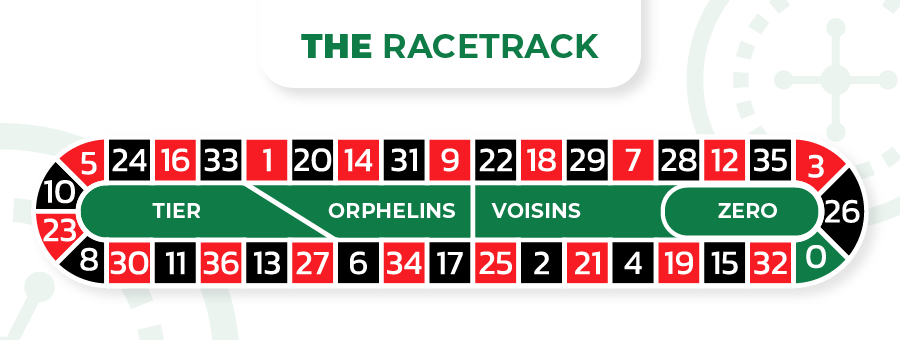
But Tosa and his associate focused exclusively on the neighbor bets, which are 5-piece bets, including one number and the two numbers on each side.
They bet on all the numbers that covered up to half the wheel before the dealer called 'No More Bets.'
And on that night, Mr. Tosa turned his initial £30,000 into £300,000. His associate turned his £60,000 into £680,000.
These numbers are not unusual for a high-end casino like The Ritz.
Some players played at those levels there every night.
The Ritz management and security specialists contacted the police the next day, sure that they were the victims of some kind of criminal activity, even though they had done a full investigation and found nothing untoward about the play.
The short version of this story is that the trio were never charged with a crime, partly because the British Gambling statute they might have been charged under was from the mid-1800s and didn't mention computers, lasers, or roulette ball tracking with cellphone software.
What happened next is perhaps the most interesting.
Mr. Tosa disappeared from the scene for years but was discovered living nearby.
Tosa claims that he and his associates never used a computer, wheel clocking software, or ball tracking to identify the section where the ball was going to land, stating that he used his experience and ability to read the ball and wheel speed to identify the section.
He said that he practiced a lot.
It's more probable that he had searched for and found a biased wheel and bet accordingly.
The scare it gave the casino, and once word got around, all the major casinos worldwide were enough to ensure that computers, lasers, and software assistance became illegal in most jurisdictions.
And the world's casinos wanted to ensure we would never have to worry about a player who could learn to read the wheel and ball speed as accurately as Mr. Tosa.
We now have Random Rotor Speed software when buying a new roulette wheel.
Wheel quality cannot be understated.
In the late 18th Century, when Roulette was in its infancy, virtually everything was handmade. This led to some quirks in the consistency of the wheels and equipment, and bias could be measured and exploited.
The famous (some would say infamous) Joseph Jagger found and exploited a bias in a roulette wheel in Monte Carlo to the tune of a small fortune. We've all heard of 'the man who broke the bank in Monte Carlo.' Well, Mr. Jagger was that man.
These days, roulette wheels are computer-designed and manufactured within 10,000th of an inch tolerance.
Currently, if the wheel shows any slight imbalance or bias, the players will quickly identify it and use it to their advantage. In the pre-computer era, it was truly difficult to identify and gain an advantage from a biased or poorly maintained wheel, but knowledgeable players did.
Nowadays, there is predictive software out there that will identify a dealer who has an exploitable 'signature' or a wheel that has even the smallest bias.
Huxley and Cammegh both make fantastic wheels, beautiful to look at, and extremely finely engineered.
Both companies have software available to make sure the game is truly random.
American Wheel
Anti-clockwise order of numbers on an American wheel, facing outwards:
0, 2, 14, 35, 23, 4, 16, 33, 21, 6, 18, 31, 19, 8, 12, 29, 25 10, 27, 00, 1, 13, 36, 24 3, 15, 34, 22, 5, 17, 32, 20, 7, 11, 30, 26, 9, 28.
European Wheel
Anti-clockwise order of numbers on a European wheel, facing inwards:
0, 26, 3, 35, 12, 28, 7, 29 18, 22, 9, 31, 14, 20, 1, 33, 16, 24, 5, 10, 23, 8, 30, 11, 36, 13, 27, 6, 34, 17, 25, 2, 21, 4, 19, 15, 32.
And the 'Macau Sequence' wheel has a European number sequence (facing inwards), plus a double zero added to the wheel to the immediate left of the single zero.
As you can see, the sequence of numbers is very different.
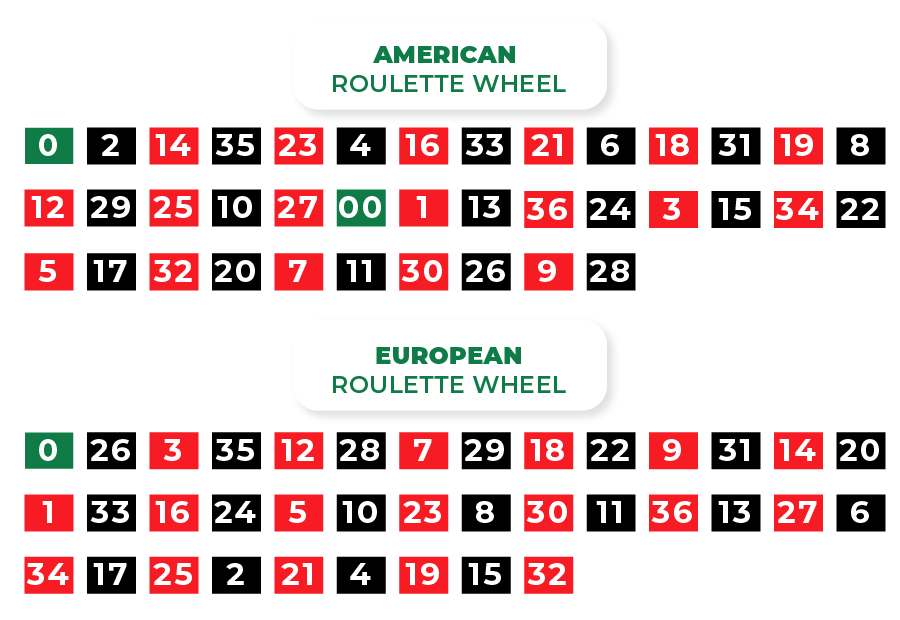
There is something they don't teach you when you're learning to play Roulette.
Whether the numbers face in or out doesn't matter to the players.
It matters to the dealers, though.
I used to prefer the inward-facing numbers because they are easier to read by looking across the other side of the wheel, whereas you had to be standing on top of the wheel to be able to read the numbers on the American wheel. And that means that it's easier to get past-posted by unscrupulous players.
When I was a dealer in London, I started to see the value of learning the layout of the numbers on the wheel.
I often dealt with players who liked playing certain sections of the single-zero European wheel we used.
As a player, one of the ways to gain an advantage in Roulette is to look for the dealer's signature. That is when a dealer isn't thinking about their game and gets into a groove.
The wheel is spinning at a consistent speed, the dealer launches the ball into the track at a consistent speed, and you may see the dealer hitting a certain section of the wheel.
It may be that the ball is advancing around the wheel by ten numbers at a time, or half the wheel, and so on.
If so, you need to be able to identify the next section that the dealer may hit, and to do that; you must know where all the numbers are on the wheel.
There isn't much time to make a 10- or 15-piece bet, so having the numbers in your head is a pre-requisite to getting your bets down in time.
In those days, we didn't have 'the racetrack' on our layouts, so we did it the old-fashioned way.
We placed the bets that the players called on the layout, or if the ball was spinning and there wasn't enough time to place the bet, we called the bet to the supervisor and placed the money to cover it on the wheel rim.
The most common bet was 'The Tiers (du Cylindre),' French for 'Third of the Wheel.' It is a 6-piece bet and covers 12 numbers.
Many players liked to bet the neighbor bets.
This is a 5-piece bet and is 'announced' by the player by asking for the middle of the five numbers and the neighbors, which includes the two numbers on each side of the requested number as they appear on the wheel.
Players liked to think that they could recognize a dealer's signature when the dealer was going to hit a certain section of the wheel, and the player would often request two or three 'and the neighbors' bets, which would give them up to 15 numbers in a section of the wheel.
For example
17 and the neighbors, 19 and the neighbors, and 36 and the neighbors cover almost half of the wheel and extend from zero clockwise around the wheel until number 30.
It includes 32, 15, 19, 4, 21, 2, 25, 17, 34, 6, 27, 13, 36, 11, and 30.
Alternative Strategies for Optimizing Play
Over the years, players have developed many strategies to increase their chances of winning. Some are very simple, like the Martingale or the Paroli systems. Some a quite complex, like the D'Alembert, or the Fibonacci systems.
None have been proven to work in the long term.
Some players swear by the number 17 and the splits around it.
Others by 32, and the associated splits.
The fact is, there are no numbers that are 'better' than other numbers. They all have the same opportunity to hit as the others.
Certain cultural nuances make specific numbers more popular than others, depending on where you play.
The number 7 is generally considered a lucky number in Western society.
In Asia, 8 is the 'lucky' number. In Western society, 13 is unlucky, and the corresponding unlucky number in Asia is 4.
All casinos are 'for-profit' business ventures.
Every game in the casino has a 'House Advantage' (HA) built into the game's math.
The easiest way to describe how this works happens to be on Roulette, but all games have a HA built into them.
In European Roulette, if you were to bet $1 on every number, including the zero, you would have $37 in action. When a winning number has hit, you
would be paid $35 for the winning bet and retain your original wager on the winning number for a total of $36.
Meaning that for every spin, you would lose $1, even though you hit a winning number.
The way you determine the HA is to divide the $1 lost by the amount of numbers on the wheel and express the product as a percentage.

It's easy to get involved in the game and not be aware of your wins and losses. Sometimes you may find yourself 'chasing.'
This is not a good place to be.
Chasing is when you have lost the amount you budgeted for but want to keep playing because 'it has to change.'
No, it doesn't have to change.
That's called 'the Gambler's Fallacy.' The wheel doesn't know what came before. So 8 Reds in a row means it must be Black on this roll?
No, it doesn't. There is no reversion to the mean on any casino game.
Every spin has the same chance of being Red or Black as the previous or next spin.
Don't keep playing when you have lost (or won!) the amount you chose as your limit.
And never borrow (or lend) money to anyone in a casino. It's a recipe for how to lose your friends.
Wonder how to choose the right table and betting limits?
This is an easy one!
The right table will be the European wheel, and if possible, with the French roulette rule of 'En Prison' or 'La Partage.' This rule returns half of your bet if the zero hits.
On those even money bets, the HA is 1.35% - against a 5.26% HA on a standard American roulette game.
Choose a lower-limit game, especially if you're a beginning player.
Once you know the game and how it works, consider going to a higher-limit game.
There are several theories about this, including an ancient Chinese numbers game where the numbers added up to 666 (just like our modern roulette game), a game played by Roman or Greek soldiers featuring arrows and spinning shields, and so on.
There are 2 candidates for the real forerunners of our modern roulette game.
One was called Even and Odd, and the other was called Roly-Poly.
Both seem to have some qualities that may have morphed into the roulette game of today.
My view is that the theory of the origin of the game that includes Blaise Pascal, a French mathematician, and physicist searching for a perpetual motion machine, is the one that is probably true.
The evolution of the wheel and its numbers
- In the early 1800s, the usual roulette wheel in France had two zeros and an eagle. If the ball landed on either the zeros or the eagle, it was an automatic loser for all the players.
- Louis and Francois Blanc, two French brothers, removed one of the zeros and the eagle to make the game more attractive when they opened their first casino in Germany. They also allowed the players to bet on the zero. That's the legend, anyway.
- Later, Sovereign Prince Charles III, who was facing bankruptcy, invited the brothers to open the casino in Monaco. After wrangling with the Prince about the fees he should receive, they opened the casino and called it Monte Carlo (Mount Charles).
- The casino opened with the single zero roulette wheel with which they'd had much success in Germany and have never looked back.
Conclusion
Here's a quick recap:
- There are three versions of Roulette; the French and European games ( that use the same wheel but have slightly different rules), and the American game. The French game is the best one for you, with the European game coming in a close second.
- The numbers are laid out on the wheels with a different sequence, but both wheels are carefully curated to ensure a well-balanced and random spread of the numbers.
- Modern roulette wheels are beautifully made, highly technical pieces of equipment.
- All numbers on Roulette have an equal chance of hitting.
- Bankroll management is a big part of how experienced players increase their chances of winning.
There are several other articles about the game in our Roulette Academy. We also have many other 'how to play' articles written by experts in the Academy, which you may want to review. The Academy is a treasure trove of 'how to play' the other casino games, with excellent detailed advice.
Please take the time to review these articles. The more you know, the more you can be sure that your play is as solid as possible.
Remember that Roulette is a game of luck – no skill is involved. Enjoy when you win, but don't expect to be able to do that every time you play. It simply doesn't work that way.
As always, keep in mind that gambling is supposed to be fun. Don't play with money you can't afford to lose; if it's no longer fun, stop playing altogether.

Bonuses
Casinos
Games
Academy
News
Shop
NEW Q&A
Sweepstakes































